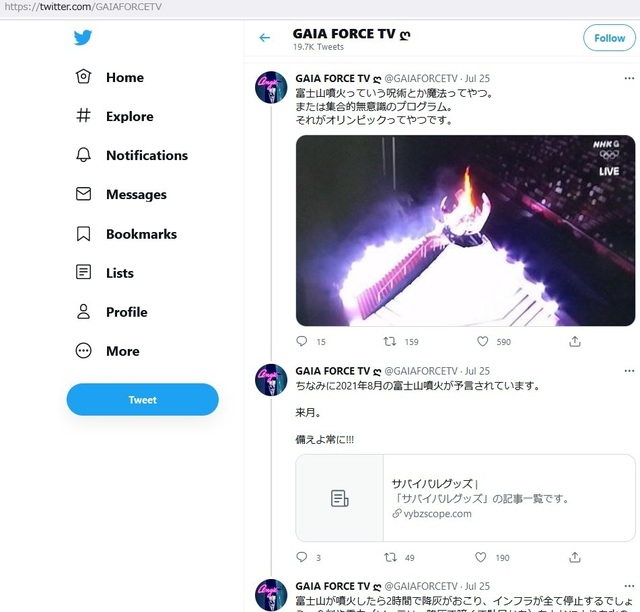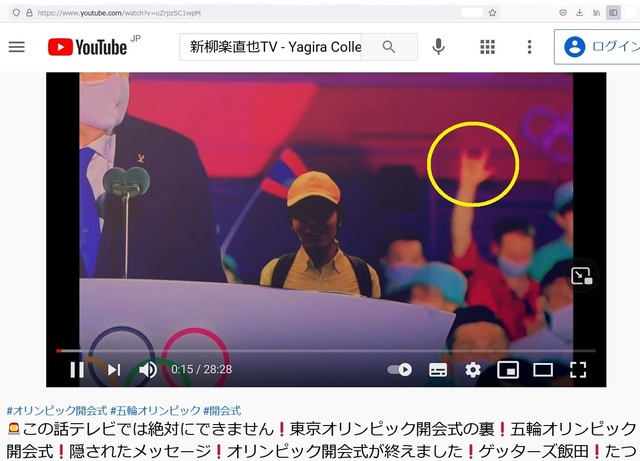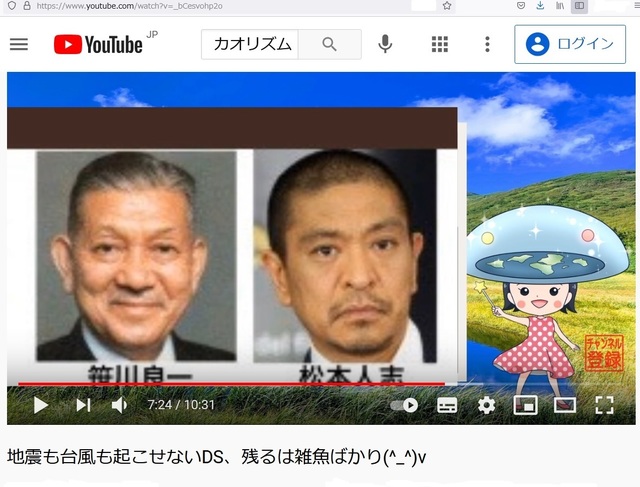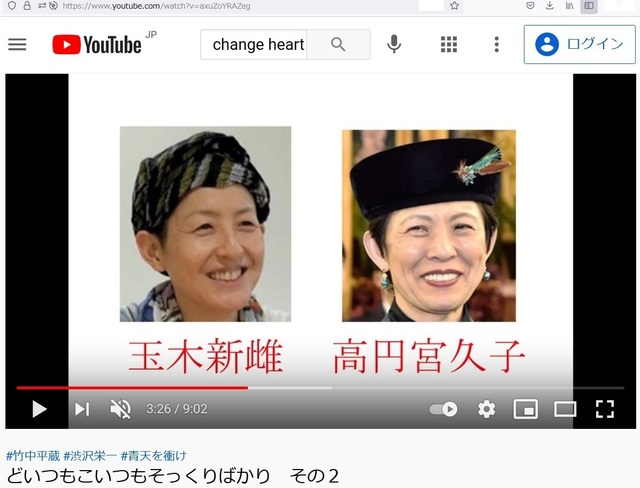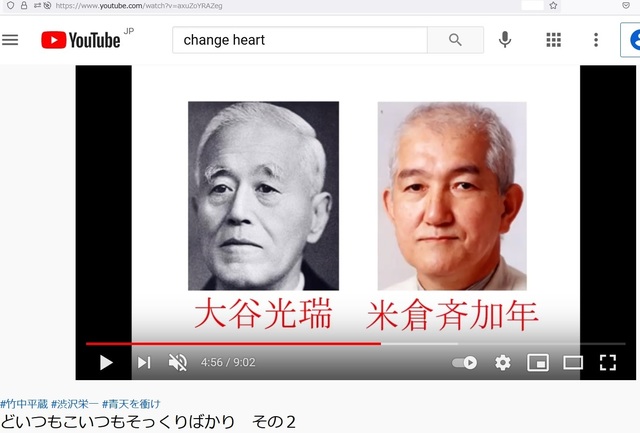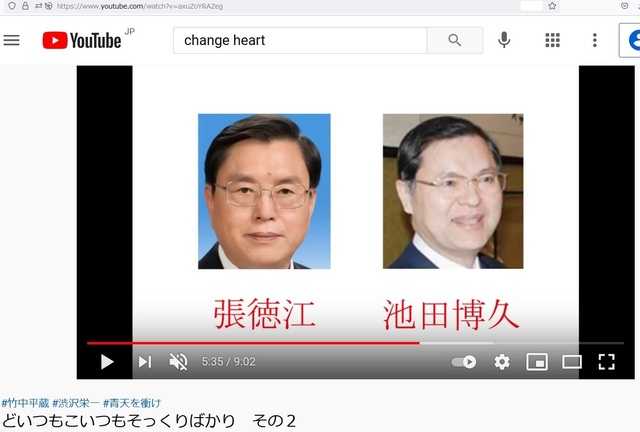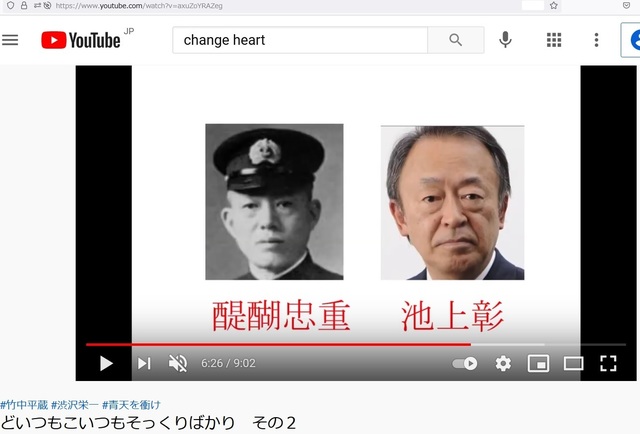李家がアジアに李王朝を敷く為に始めた大戦だった。敗戦前提の大戦開始を莫大な賄賂と戦争準備金を受け取る事で1921年ロンドンで英米仏と多国間協定を結んだ裕仁!その2

【下念司ニュースの猫側】アメリカの一番偉い人が辞めるってほんとうですか?
2021/07/28
https://www.youtube.com/watch?v=COJ-6pNoDEY
おみそちゃんねる【世界どん深闇ニュース】


hiro🇯🇵
@a6D9N69JSyrPKHO
https://twitter.com/a6D9N69JSyrPKHO/status/1418435080423280642
Ryu@2021年1月YouTube始めた人
@uchina_gogo
米の国で567に関わったやつシバくそうな。


■rumbleで衝撃動画が配信↓
https://rumble.com/vju6wb-33321323.html
purechannel Published July 14, 2021 177,857 Views
Rumble — アメリカ上院、正式に、今回のパンデミックを計画した者達、それをサポ-トした者達への処罰を行うつもりであると、公式に発言!
DSよ、いつかは滅びる運命だ! 今滅びよ!
日本DSのね、話でね、
えっとねぇ、日本DSのある一つのグループと言われているのが、
この人達、
え~薩長テロリスト集団!薩長DS!ハイ、
で、明治維新に登場して、今、その英雄視されてるような人達が、
まず、日本DSの一味としていて、
で、この人達の子孫にあたる人が、
色んな処で活躍しているっていう現実があると。ハイ、
で、ですね、ちょっとねぇ、あの~、
オリンピックのちょっと前にねぇ、あの~、変な気球があがったじゃないですか、
代々木公園にね、で、これ誰って話が出てて、
で、最初はね、関暁夫じゃないの、ハイ、
でも、これは、どうやら創価せんべいの池田腐作さんの、
若かりし頃、ハイ、あの似てますよね、前原さんにも、ちょっと、
目の辺りがね。で、なんで、これが、今頃、
オリンピックの前に出たかっていうと、どうやら、
まぁ、この方は、もう随分前に亡くなってるんですけど、
あの、生きてるって事になってたんですよね。
でも、それもいよいよ、本当の事を出して、
まぁ、弔いではないかと、ハイ、なんか、こう、
なんか変な趣味!弔い方が変ですけれども、これは、
池田腐作さんではないかという話をちょっと頭に入れて頂いてですね、
今日の親子シリーズに行きますね。ハイ、今日の親子シリーズ、
ハイ、池田さんに出て頂いて、ハイ、この池田さんのね、
これ、父親かどうか判らないですけど、
池田さんに子供はいっぱいいるじゃないですか、
はい、でも池田さんの祖先って話、あんまり聞いた事無いなぁと思って、
出てきたんですけど、中国ヤクザ、チンパンのドン!
「黄金栄」にそっくり、っていう写真が出て来ましたぁ!
ハイ、これ、他人の空似ですかぁ、ウフフ、
ハイ、で、「黄金栄」さんっていう人はねぇ、
どういう人なのかって言ったら、「黄金栄」は、
中国の犯罪組織「青幇(チンパン)」の首領で、まぁ、どこの国にも、
こういう極みの道の方っていらっしゃるんですよね。
で、まぁ、中国にも、勿論、いらっしゃるよって話で、
これを見ててね、これ下にね、見たらね、あれ誰かに似てない?っていう、
あの黄さん、この黄飛鴻さん!っていうんですかねぇ、
この人、中国の武術家なんですけど、
この人誰かに似てません?ウフフフフ、
ハイ、黄飛鴻さん!が誰に似ているのかで、ハイ、
私は、この人に似てると思ったんですね、
えっとねぇ、笹川良一さんに似てるな、って思って!
で、ピッ、笹川良一さんは左、で、この右の人は!ハハハ、あれ、右の人もなんか、
笹川さんに似てるみたいな、ハイ、これも、他人の空似ですけれど、
笹川さんは日本の右翼みたいな事言われてますけど、
朝鮮人ですね!朝鮮名を持ってる半島の方、在日の方!
ハイ、でも、中国人に笹川さんと似ている黄飛鴻さんって
人が出て来たじゃないですか、
ハイ、でね、あの、李さんっていうのは、中国にも居るんですよね。
あの、ブルースリーさんも李さんですよね。
なので、半島系にもその祖先には中国系がいるんじゃないの?
って事が一つの気付きなんですよね。
私の気付きであり、妄想であり、
で、笹川さん良一とよく似た人がねぇ、もう一人見つかったんですけどね、
そっ、それがね、この人!
えっ、これ気球の人じゃないの?って言われてた、
関暁夫さんと笹川良一さんが並んだ写真がなぜか出てきましたと、ハイ、
他人の空似ですよ。こんな情報が出てきて、
だからねぇ、あの~、日本の、えっと、この人達をなかなか去らない、
なかなか去らない、ウフフフ、
ハイ、え~、これ、これですよね。
日本の政界も財界も芸能界も仕切っているこの方達の祖先も、
まぁ、半島だけでは無くて、中国にも居る!居るのかな、
まぁ、陸続きですからね、ハイ、それはまぁ、ありうるなという話でした。
~
(~9:18)




(~6:18)
とんでも無いドローンが開発されてしまったと、
ね、ちょっと、闇の者達の間で話題なんですよ。
何かと申しますと、
ドローンでね、雲の中に突っ込ませるじゃないですか、
そのドローンから50度の熱が発せられるらしいんですよ。
そして、ね、土砂降りを起こす事が出来る。っていう、
これ、正に、気象のあれが、実用化されてる、
もうね、実用化されてるんですよね。
土砂降りを降らす事が出来ると!
これね、現在は小っちゃいモノかもしれないですけど、
例えばですね、権力を持ってる人が、本気出したら、
この町を沈める事くらい、余裕なんじゃない、
ってちょっと思ったんですよね。
世界中にはね、例えば、HARRPであるとか、ね、
なんか、ヤバそうなモノがある訳じゃないですか、
ついに、表の、ニュースにも、こういったドローンでね、
出来るって事が判ってきちゃいましたんで、
これね、もう、何やっても無駄じゃ~ん、って事が
判って来ましたんでね、投げやりな人生に邁進していく
可能性あるんでね、あの、止めたいと思いますね。
待て、人生はビューティフルという事ででですね、
~

【下念司ニュースの猫側】わぴこの元気予報!!銀座辺りがやばい気がする予言!!
2021/07/23
https://www.youtube.com/watch?v=0agwoKhxdXA
おみそちゃんねる【世界どん深闇ニュース】
UAE tests the use of electric charge drones in cloud-seeding operations to make rain
UAE and UK experts work to mitigate the risk of water stress on regions around the world

The National Center of Meteorology has launched a UAV
campaign to test the effectiveness of electric charge emission in
enhancing rainfall
Image Credit:NCM
The UAE's National Center of Meteorology is conducting tests to see
whether electricity can be used during cloud-seeding operations to
enhance rainfall over the country, and mitigate water stress in arid
regions.
Alya Al Mazroui, Director of the UAE Research Program for Rain Enhancement Science (UAEREP), explained to Gulf News how clouds could be given a helpful jolt of electric charge to increase much-needed rainfall in the country.
"With the help of Unmanned Arial Vehicles (UAVs), the UAE's NCM along
with a team of national and international experts are conducting
research to test the effectiveness of delivering electric charge into
clouds to improve rainfall," she said.
"The UAE is conducting this campaign with the support of experts from
the NCM, UAEREP and several national and international research and
academic organisations including the University of Reading and
University of Bath in the United Kingdom. The campaign is led by Giles
Harrison, Professor of Atmospheric Physics at the University of Reading
in the United Kingdom and a second cycle program awardee," Al Mazroui
added.
The study is based on an award-winning research proposal by scientists at the University of Reading in 2017.
How does it work?
She explained: "We are using UAVs or drones to conduct these
experiments in the UAE. The UAVs are equipped with a payload of electric
charge emission instruments and customized sensors. These drones will
fly at low altitudes and deliver an electric charge to air molecules."
The study investigates how charge modifies the growth of tiny water
droplets into larger drops that fall as rain. As clouds naturally
carry positive and negative charges, altering the size of the charges
could cause the water droplets to grow and merge, thus producing rain.
"The UAVs fly at low altitudes around a meteorological mast
instrumented with an electric field mill. Charge is emitted by the UAV
and detected at the surface by the electric field mill," according to
the UAEREP.
The UAVs were developed and tested in the UK, Findland and the UAE.
According to UAEREP, the effectiveness is tested on clear air days,
and once conditions permit, on days with light fog with the presence of
dust particles in the atmosphere, which is expected to lead to more
highly charged conditions.
Since the use of drones needs specific permissions and space, the
experiments are taking place at SANAD Academy, a flight school in Dubai.
How is it different from traditional cloud-seeding?
The charge emission technology uses a small, lightweight vehicle to
deliver charge into the clouds instead of traditional cloud seeding
payloads. This method does not involve the emission of any solid
particles into clouds such as silver iodide or salt.
During traditional cloud seeding flights in the UAE, natural salts or
hydroscopic agents are shot into clouds to enhance rainfall, Alya
Al Mazroui explained.
The UAE was one of the first countries in the Arabian Gulf
to adopt cloud seeding technology. The programme initially began at the
end of 1990, but by the end of 2000, the fully-fledged project was
carried out in cooperation with a number of organisations and
institutes, including the US space agency Nasa.
The NCM’s cloud
seeding department uses a sophisticated weather surveillance radar
(WSR), which monitors the atmospheric pressure around the clock.
The NCM first gathers required information through weather satellites, pictures and the WSR
Cloud
seeding missions are only dispatched if rain-bearing cumulus cloud
formations are seen over the country. Once they are identified, the NCM
quickly launches aircrafts carrying salt crystals – mixed with
magnesium, sodium chloride and potassium chloride.
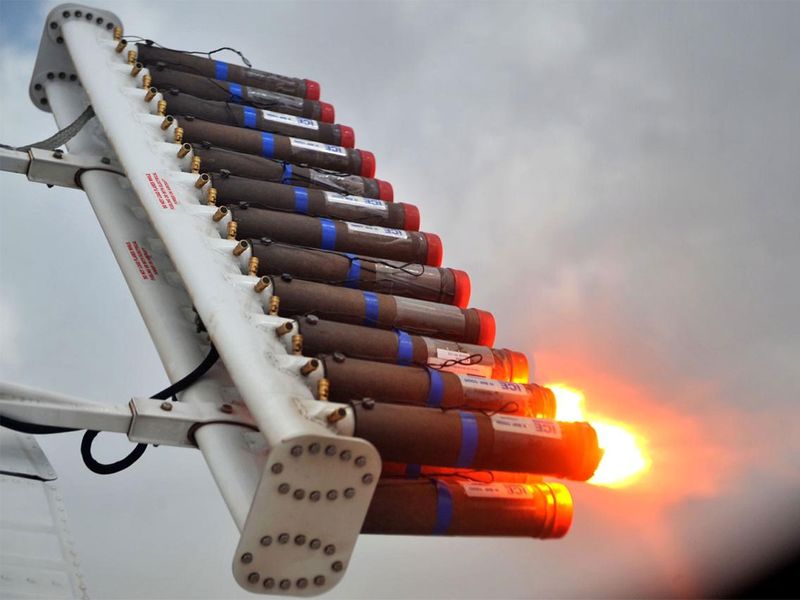
process helps develop water droplets that gradually grow in size by
colliding with each other and that’s what the scientists called the
coalescence. These droplets then start dropping and form the rain.
What is cloud seeding?
The reason there's so much rain in the UAE
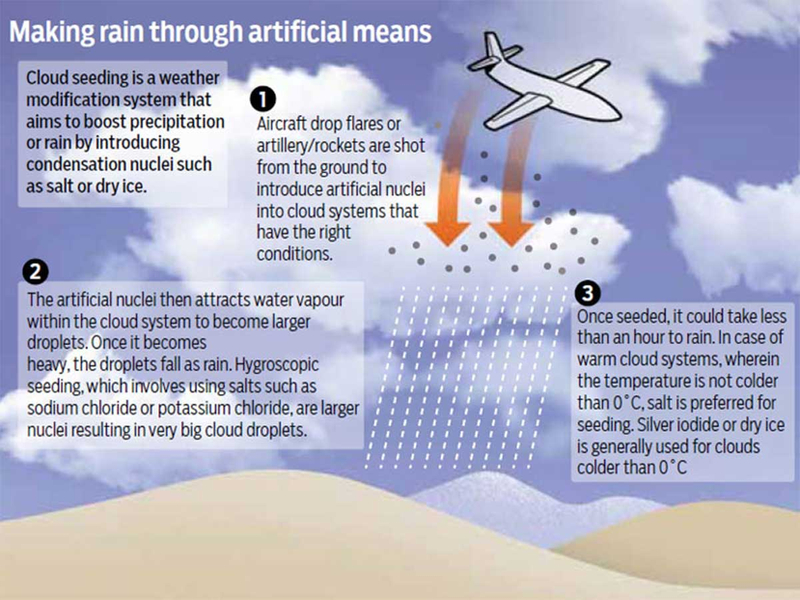
Infographic: How cloud-seeding is done in the UAE
However, with the charge emission technology method, no solid
particles are shot into the clouds. Instead, the UAV emits positively
and negatively charged ions, which will attach to cloud droplets and
aerosol or dust particles which are already present in the atmosphere.
"Charge is expected to modify the behaviour of droplets and particles
(such as helping droplets grow), which in turn may influence rainfall
processes," according to the UAEREP.

The nature of charge emission technology allows the use of a small and lightweight vehicle.
Image Credit: UAERE
"The other aspect which is different is the platform used to deliver
the charge: the use of UAVs provides a cost effective and flexible
method of delivering charge to cloud layer altitudes. The nature of
charge emission technology means that a small and lightweight platform
can be used, unlike traditional cloud seeding payloads which require
much larger aircraft," an official added.
UAE: A global hub for rain enhancement research
Commenting on the importance of the research, Alya Al Mazroui said:
“...we seek to ensure that their projects are geared towards addressing
the challenges facing water security in arid regions. Through our
partnerships with prominent scientists and research institutions across
the globe, the program is accelerating the development of practical
innovative solutions in the field of rain enhancement science.”
Dr Abdulla Al Mandous, Director of the National Center of Meteorology
(NCM) and President of the Regional Association II (Asia), said: “The
NCM and the UAE Research Program for Rain Enhancement Science are
continuing to support the awardee projects to contribute to the
development of viable solutions for the growing global water stress.
Such efforts are crucial in driving and encouraging innovation in
applied scientific research to advance global rain enhancement capacity.
With the continued support of our wise leadership, NCM is committed to
mitigating the risk of water stress on arid and semi-arid regions around
the world, while enhancing the country’s status as global hub for rain
enhancement research.”
やっぱり資質も本質も昔から未来永劫変わらん寄生、窃盗、植民、抹殺が骨の髄まで素性の海賊共が欧州鬼賊共だ!ダメだ!コイツら!
「(3:49~)
~
マゼランは【スペインを統治していたハプスブルグ家の!】カルロス一世の命を受け世界で初めて世界一周の航海を成功させ、
コロンブスはカルロス一世の妻であり、フアナの妹でもあった、
イザベル女王から資金援助を受け、アメリカ大陸を発見。
1521年にはコルテスがメキシコのアステカ帝国を滅ぼし、
1533年にはピサロがインカ帝国を滅ぼしました。
アメリカのインディアンや南アメリカのマヤ賊が葬られていったのは、
このスペインによる大航海時代が始まってからです!~」











































世界の富の99%はハプスブルク家と英国王室が握っている
2021/03/07
https://www.youtube.com/watch?v=WYEQgPMMiOI
令和TV
【急展開】中国で巨大ダムが決壊?近平帝国、天変地異で崩壊か
https://leaktime.com/2021/07/25/%e3%80%90%e6%80%a5%e5%b1%95%e9%96%8b%e3%80%91%e4%b8%ad%e5%9b%bd%e3%81%a7%e5%b7%a8%e5%a4%a7%e3%83%80%e3%83%a0%e3%81%8c%e6%b1%ba%e5%a3%8a%ef%bc%9f%e8%bf%91%e5%b9%b3%e5%b8%9d%e5%9b%bd%e3%80%81%e5%a4%a9/
2021/7/25
目次
呪い
地下鉄
爆破
まとめ
呪い
中国はあるもので呪われているようだ。それは一体なんなのだろうか?その答えを知った時この国にまとわりつく邪霊の恐ろしさを知るに違いない。
中国中部では今記録的な豪雨が発生している。AFP通信は悲惨な状況をつづっている。
【AFP=時事】中国中部で記録的な豪雨が発生し、地下鉄が浸水し、堤防や土手が損傷した。土砂崩れや建物の倒壊も起きている。
中国では毎年大規模な洪水が発生しており、政府は国内各地に設置した巨大なダム・堤防ネットワークを対応策としてアピールしてきた。しかし近年では、豪雨で数百人が死亡、家屋数千棟が水没するなどの被害が出ている。
https://news.yahoo.co.jp/articles/2c41d7bdc376e169cb4a01954a0c4378efb4cb38
豪雨であるが被害者数はとんでもないのだ。
中国内陸部、河南省の記録的な大雨による水害では、これまでに25人が死亡、7人が行方不明になっています。被災した人は120万人を超え、中国政府が救助活動を本格化させています。
中心都市の鄭州では現地時間の20日午後5時までの1時間の雨量が200ミリを超え、観測史上最も多くなりました。
https://www3.nhk.or.jp/news/html/20210722/k10013153241000.html
何かとんでもないことが起きているが、これは特に中国では珍しいことでもない。とっくの昔から予測できることだ。というのも中国はダムや堤防がまともに機能していないのである。
中国では以前から、水流を制御したり迂回(うかい)させたりするために、ダムやせき、貯水池に依存してきた。
中国応急管理部によると、昨年にはアジア最長河川の長江(Yangtze River)の堤防や貯水池で約300億立方メートルの水をせき止め、上海を含む下流域への被害を軽減した。
だが巨大インフラをもってしても、すべての洪水は食い止められていない。数十年前に建設されたダムや堤防については、耐久性を疑問視する声も出ている。
https://news.yahoo.co.jp/articles/2c41d7bdc376e169cb4a01954a0c4378efb4cb38
ここにも耐久性とあるが、中国には大量の脆いダムが存在しており、今にも崩れ落ちそうなダムが多数存在しているのだ。その代表と言えば去年も話題に上がった三峡ダムである。
去年三峡ダムは最高水位に達しながらも決壊をなんとか免れたわけだが、決壊を免れたからと言って今年は大丈夫という話ではない。予測しておくが、今年も決壊危機が叫ばれるだろう。
いや毎年決壊危機が叫ばれるように思える。それくらい風前の灯火なのである。
というのも三峡ダムというのは汚職の温床で知られている。李鵬一派は総工費2000億元のうち34億元を汚職や賄賂で抜いていたと言われている。
「汚職の温床」と化し、総工費2000億元のうち34億元が賄賂や汚職に消えたと言われ[70]、中でも李鵬はダム建設に使われる資材や設備の購入を通じて外国企業から巨額の賄賂を受けたとされる[71]。更に、三峡ダムを管理・運営するzh:中国长江三峡集团傘下にあるzh:長江電力グループが香港証券取引所に上場した際には、息子の李小鵬や娘のzh:李小琳の会社や、妻のzh:朱琳 (政治人物)が経営する会社も同グループの株式を大量に購入し、巨額の利益を手にしたとされる
https://ja.wikipedia.org/wiki/%E4%B8%89%E5%B3%A1%E3%83%80%E3%83%A0
つまり材料費を抜くために手抜き工事が頻発し、まともな工事がされてない部分も存在する。ちなみにこの三峡ダムがもし決壊すると、上海が沈み壊滅的なダメージを受けることとなる。まさに再起不能レベルと言える。
なお、万が一決壊した場合は上海市や武漢市などの下流域の大都市に大きな被害をもたらし、中国経済に大ダメージを与えるとともに、中国国内の電力供給がストップすることで大規模な停電を引き起こす可能性がある。
https://ja.wikipedia.org/wiki/%E4%B8%89%E5%B3%A1%E3%83%80%E3%83%A0
さらに三峡ダムはgoogle earthで歪みを確認されていた。しかし中国政府はその歪みを認めていない。もはや打つ手がないのだろう。決壊を待つだけだと言えるのだ。
2019年、中国国内のダム専門家がGoogle earthで2009年に撮影したダムの基礎部分の写真と2018年に撮影した写真を比較した際「2009年にはダムの基礎部分はまっすぐな直線になっているが、2018年には数ヶ所が湾曲している」と発表したことで、三峡ダムに決壊の危機が迫っているとする声が高まった
https://ja.wikipedia.org/wiki/%E4%B8%89%E5%B3%A1%E3%83%80%E3%83%A0



中共にはこのようなダムが多数存在しているのだ。これは共産主義中抜き体制の邪霊だと言える。いつ決壊してもおかしくないのである。
さらにこのような問題だけではない。ダムは水没するので、住民はたち退きが必要なわけだが、なんとまともな助成金も支払われずに強制的に移住させられたのである。
いや正確にいうと、助成金が中抜きされており搾かすしか住民に渡されない問題が発生している。この数は127万人である。想像して見ていただきたい。
家に人民解放軍がやってきて、出ていけと言われ 1万円しか渡されなかったら。これからどこで暮らすだろうか?
当然三峡移民は貧困層へ転落し社会問題になったのである。いくあてもなくなると元ある家で暮らしたいとなるだろう。たとえ水没するのがわかっていたとしてもだ。
しかし中共が何をしたか。逮捕である。一つ忠告しておくが、共産主義は容赦がない。血も涙もない邪霊なのである。
そしてグローバリズムも共産主義から始まっている。ロシア革命まで辿り現状を見ないと何も見えてこないのである。その姿は霞んでいる。
もし中道左派の自民党政権やもっと極左政党が日本を掌握し、中共の属国化した場合このような未来はそう遠くはないのである。
地下鉄
恐ろしいのは地上だけではない。最恐ろしい地区があるそれはどこか?答えは地下鉄である。
この大雨で各地で洪水が発生し、このうち鄭州の地下鉄ではトンネル内の車両が浸水し12人の死亡が確認されました。
https://www3.nhk.or.jp/news/html/20210722/k10013153241000.html
yahoo newsの映像にはとんでもないものが載せられていた。地下鉄の車内の半分まで水が侵入してきている様子だったり、なぜか川を泳いだりとだ。
[多くの人が行方不明または閉じ込められています] 河南省鄭州では過去24時間雨が降り続け、街全体が浸水しました。火曜日の夜まで、鄭州の多くの地域はまだ海に覆われ、建物が浸水し、車が流され、停電が発生しました。多くの地区で。 この集中豪雨はまた、鄭州でこれまでで最強の降雨や24時間で本土の首都で最大の降雨を含む多くの記録を破りました。
https://twitter.com/RFA_Chinese/status/1417454022483644417
記録的豪雨が続いた中国中部・河南省鄭州市で19日、地下鉄の駅やトンネルが浸水した。 数百人が電車内に閉じ込められたほか、ホームから流されてしまった人もいた。 ある車両では、水位がかかとから腰、首の高さまで徐々に上昇した。 パニックに陥った乗客が上に伸び上がって空気を求めたり、背の低い人を引き上げて助けたりした。 河南省全体では、豪雨と洪水で少なくとも25人が亡くなったほか、20万人以上が避難した。
https://news.yahoo.co.jp/articles/01b9e5216b03a8ca64505e414ba50a7e9e0b634f
サウスチャイナモーニングポストは悲惨な地下鉄内の状況を送ったとされる。
香港紙「サウス・チャイナ・モーニング・ポスト」の報じた動画では、乗客を乗せた地下鉄が水に浸かり、どんどん水位が上がっていく様子が映っている。コメントには「感電する可能性」を危惧するものや、「トラウマになる」といった声が寄せられている。
https://news.yahoo.co.jp/articles/88a9195c630f72762558e9bfba4e029db68424ab
そして乗客の中には諦めたものもおり、上がっていく水位のもと愛するものにメッセージを送るものもいたという。
さらに紙は恐怖の車内を鮮明に綴る。
閉じ込められた乗客はその恐怖を鮮明に語る。夏に足首の辺りまで水が来ることは慣れているが今回のように全部破壊されるとは思わなかったよと。
この乗客は「最悪の事態が訪れたときは、窓の外の水位が人の背丈よりも高かった。列車の最後尾を見ると完全に水没しているように見えた」と恐怖の瞬間を振り返る。
「震えたり、息を切らしたり、嘔吐したりする人もいました。子供や妊婦、高齢者もいました。救助隊が対処しているという話も聞こえましたが、窓の外の水の量を見て絶望しました。水位が頭に達する頃には、愛する人に最後のメッセージを送りました」
水位が上昇して車内が酸欠気味になり、ドアを開けようとする者がいたが、制止されたという。「そうでなければ、私たちは死んでいたでしょう」と女性は振り返っている。まだ水位が高くない先頭車両の上部の窓を消火器で割ったことで、酸欠を免れたそうだ。
https://courrier.jp/amp/254429/?utm_source=yahoonews&utm_medium=related&utm_campaign=254429
この乗客のセリフは毎年豪雨は起こるが、今年はさらに強くなっていることを明らかにしている。そしてなんとこの降水量は過去60年間で最大のものだという。
「100年に一度」、「1000年に一度」と言われる規模の災害に毎年のように見舞われるいま、外国で起きた悲劇も決して対岸の火事とは言えない。
https://courrier.jp/amp/254429/?utm_source=yahoonews&utm_medium=related&utm_campaign=254429
と紙は続けた。年々被害は拡大している。それには原因がある。それはまた次回詳しく話そう。
爆破
なんと北京政府はとんでもないことをしでかしている。なんと堤防やダムの一部を爆破しているとのことだ。
北京—広範囲にわたる洪水による死者数が少なくとも25人に増加したため、中国軍はダムを爆破して洪水を放出し、最も人口の多い州の1つを脅かしています。
洛陽市で火曜日の夜遅くにダムの運用が行われたのと同じように、河南省の首都鄭州が深刻な洪水に見舞われ、住民が地下鉄に閉じ込められ、学校、アパート、オフィスで立ち往生した。
https://www.npr.org/2021/07/21/1018764692/china-blasts-dam-to-divert-massive-flooding-that-has-killed-at-least-25
さらにAFPはこう報道している。
【7月20日 AFP】中国の一部地域で豪雨が降り続き河川が増水する中、同国東部の安徽(Anhui)省で、当局は19日、洪水による切迫した事態を緩和するため、堤防の一部を爆破した。地元メディアが報じた。
中国共産党機関紙・人民日報(People’s Daily)系の環球時報(Global Times)によると、堤防の爆破によりこの河川の水位は約70センチ下がると見込まれている。
https://www.afpbb.com/articles/-/3294821
中国豪雨 ダム決壊の恐れ…緊急放流のため一部爆破
大雨による被害が広がっている中国でダムが決壊する恐れが高まり、緊急放流のために一部が爆破されました。 河南省洛陽にある伊河灘ダム。堤防が長さ20メートルにわたって決壊しています。 21日未明、軍の部隊が土嚢(どのう)を積み上げて補強を行いました。 しかし、水圧でダム全体が崩壊する危険性が高まったため21日...
さらにテレ朝はダムの爆破の様子を伝えている。人民解放軍は駆り出された。人民解放軍は土嚢により堤防を補強したが、処置が間に合わず最終手段に打って出たのである。
しかし、水圧でダム全体が崩壊する危険性が高まったため21日午前6時、緊急放流で水位を下げるためにダムの一部がダイナマイトで爆破されました。
https://news.tv-asahi.co.jp/news_international/articles/000223321.html
もはや終極感が否めず、放流された水はどこに行ったのか?それは間違いなく洪水を引き起こしそうだが、そこまで被害は深刻化しているのだろう。もはや爆破しか打つ手がなかったのである。
さらに内モンゴル自治区でも2つのダムが既に決壊しているのである。
中国で起きたダムの決壊で2万人近くが被災するなど深刻な影響が出ています。 中国メディアによりますと、内モンゴル自治区で起きたダムの決壊で、19日までに約1万7000人が被災したということです。 決壊は2つのダムで発生していて、茶色く濁った水は下流の市街地に達して多くの住宅や農地が水没しました。 地元の当局はボートや特殊車両を使って浸水した家などに取り残された市民の救助にあたっています。 現地では22の橋が流失し、高速道路も16キロにわたって通行できない状態だということです。
https://www.nagoyatv.com/news/kokusai.html?id=000223179
さらにダムが決壊する様子がアフロは報じているのでleaktimesにリンクを貼っておこう。想像以上に悲惨な光景である。
このため、貯水池は満杯状態になり、堤防決壊に至ったものだが、下流域の住民はすべて決壊前に避難しており、この事故による死者は報告されていない。 シンファ貯水池は、総貯水量は3808万立方メートルの中規模のアースダムで、決壊当時余水吐は開いていた。
https://news.yahoo.co.jp/articles/00604cda77564195796b1c781059f5f4cb943b33
しかし中国政府はこの結界により死傷者は出ていないと言っている。明らかに嘘な気しかしないが、中共政府はこのような情報統制はよくやるので中共が出す情報は一切信頼できないのだ。
そんな人民解放軍ですら声明を発表しており、早く逃げろと警告している。
中国河南省鄭州地域に記録的な大雨が降り、洛陽市の伊河タン(Yihetan)ダムが決壊危険に置かれた。 【映像】欧州西部豪雨 洪水に流される自動車 中国人民解放軍は20日、声明を出してダムに20メートルの長さの亀裂が広がり、いつでも決壊する可能性があると警告した。
https://news.yahoo.co.jp/articles/607f794b3747bf895ad33bfea08d6615081bed12
さらにTwitterではとんでもない様子が連日出ているのである。それも貼っておこう。Inside paperはとんでもない映像を貼っていた。
Tweets by kikipatowan
-支援するために配備された中国軍 -少なくとも12人が死亡 -10,000人以上が避難しました -国の中心にあるイヘタンダムは「いつでも崩壊する可能性がある」
三峡ダムもおそらくまた今年もピンチになるだろうが、今はイーヘンダムがヤバそうだ。
まとめ
内モンゴル自治区ではダムが既に2つ決壊している
安寧では人民解放軍が土嚢を敷くが、耐えきれず一部爆破した
よく考えると、爆破しても決壊してることに変わりはなく、水の出口が20mから1mに変わるだけであって下流に水が流れ込むことは変わりない
あまり解決策になってないように思える。
そのような最終手段を使わないといけないくらい追い込まれてるということだろう
さらに国の中心地であるイーヘンダムは決壊が叫ばれている。既に12人がなくなっている
中共には毛沢東時代からこのような決壊する可能性がある欠陥ダムが多数作られていた
よってこれはどう見ても時間の問題であった。まさに時限爆弾である。
今時限爆弾が爆発しているにすぎない。
三峡ダムも今年も大変なことになるのは概ね予測できる。
さらにこのダムには闇が隠されていた。今回はほぼ日本の記事の引用であったが、リクエストありましたら台湾メディアや海外メディアの詳細な報道を追うことにしよう。
https://leaktime.com/2021/07/25/%e3%80%90%e6%80%a5%e5%b1%95%e9%96%8b%e3%80%91%e4%b8%ad%e5%9b%bd%e3%81%a7%e5%b7%a8%e5%a4%a7%e3%83%80%e3%83%a0%e3%81%8c%e6%b1%ba%e5%a3%8a%ef%bc%9f%e8%bf%91%e5%b9%b3%e5%b8%9d%e5%9b%bd%e3%80%81%e5%a4%a9/
#竹中平蔵 #渋沢栄一 #青天を衝け
どいつもこいつもそっくりばかり その2
2021/05/16
https://www.youtube.com/watch?v=axuZoYRAZeg
change heart
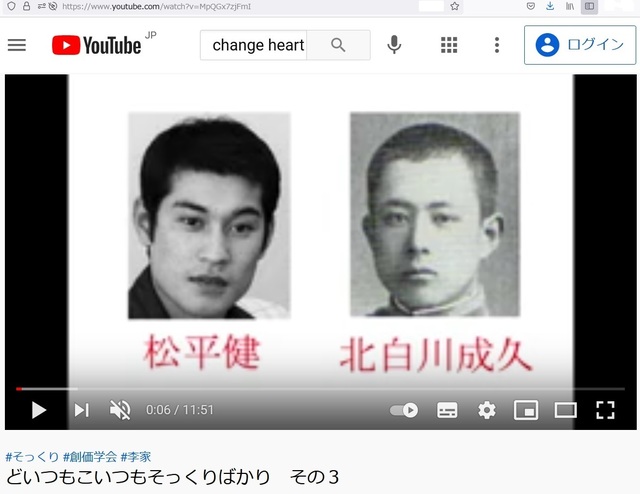



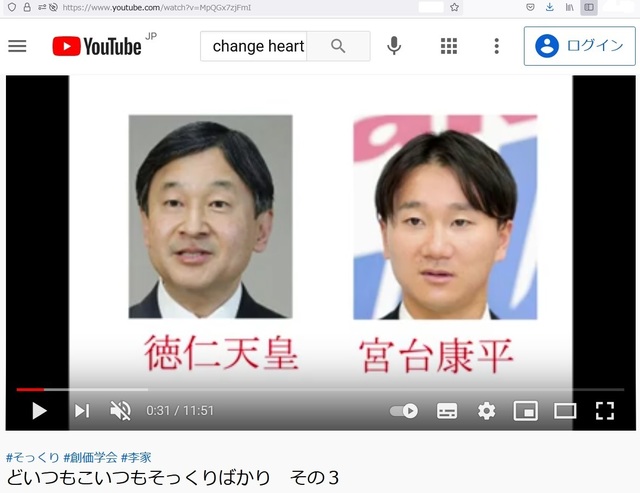
















#そっくり #創価学会 #李家
どいつもこいつもそっくりばかり その3
2021/05/16
https://www.youtube.com/watch?v=MpQGx7zjFmI
change heart
Lütfen aşağıdaki URL'nin otomatik çeviri sitesinde açıklanan Japonca ana dili için otomatik çeviri okuyun.
https://www.excite.co.jp/world/turkish/
在下列的URL的自动翻译网站,做向记载的日语的母语的自动翻译请读。
https://www.excite.co.jp/world/chinese/
يرجى قراءة الترجمة التلقائية للغة الأم اليابانية الموصوفة على موقع الترجمة الآلية لعنوان URL أدناه.
https://www.excite.co.jp/world/arabic/
لطفا ترجمه خودکار به زبان مادری ژاپنی شرح داده شده در سایت ترجمه خودکار آدرس زیر را بخوانید.
https://www.excite.co.jp/world/persian/
Пожалуйста, прочитайте автоматический перевод на родной язык японского языка, описанный на сайте автоматического перевода URL ниже.
https://www.excite.co.jp/world/russian/
Bitte lesen Sie die automatische Übersetzung in die Muttersprache Japanisch, die auf der automatischen Übersetzungswebsite der folgenden URL beschrieben ist.
https://www.excite.co.jp/world/german/
Prosimy o przeczytanie automatycznego tłumaczenia na język ojczysty języka japońskiego opisany na stronie automatycznego tłumaczenia poniższego adresu URL.
https://www.excite.co.jp/world/polish/
कृपया नीचे दिए गए यूआरएल की स्वचालित अनुवाद साइट पर वर्णित जापानी की मूल भाषा में स्वचालित अनुवाद पढ़ें।
https://www.excite.co.jp/world/hindi/
Silakan baca terjemahan otomatis ke bahasa asli Bahasa Jepang yang dijelaskan di situs terjemahan otomatis URL di bawah ini.
https://www.excite.co.jp/world/indonesian/
Prašome perskaityti automatinį vertimą į japonų gimtąją kalbą, aprašytą automatinio vertimo svetainėje url žemiau.
https://www.excite.co.jp/world/lithuanian/
Vă rugăm să citiți traducerea automată în limba maternă a limbii japoneze descrisă pe site-ul de traducere automată a URL-ului de mai jos.
https://www.excite.co.jp/world/romanian/
Veuillez lire la traduction automatique dans la langue maternelle du japonais décrite sur le site de traduction automatique de l’URL ci-dessous.
https://www.excite.co.jp/world/french/
Přečtěte si prosím automatický překlad do rodného jazyka japonštiny popsaného na webu automatického překladu adresy URL níže.
https://www.excite.co.jp/world/czech/
Lūdzu, izlasiet automātisko tulkojumu japāņu dzimtajā valodā, kas aprakstīta tālāk norādītā URL automātiskās tulkošanas vietnē.
https://www.excite.co.jp/world/latvian/
Lue automaattinen käännös äidinkielelle japanin kuvattu automaattinen käännös sivuston URL alla.
https://www.excite.co.jp/world/finnish/
Kérjük, olvassa el az automatikus fordítás az anyanyelve japán leírt automatikus fordítás helyén az alábbi URL-t.
https://www.excite.co.jp/world/hungarian/
Preberite samodejni prevod v domorodski jezik japonščine, opisan na spletnem mestu samodejnega prevajanja URL-ja spodaj.
https://www.excite.co.jp/world/slovenian/
Palun lugege automaatne tõlge emakeel jaapani kirjeldatud automaatse tõlke saidi URL allpool.
https://www.excite.co.jp/world/estonian/
Prečítajte si automatický preklad do rodného jazyka japončiny popísaný na stránke automatického prekladu adresy URL nižšie.
https://www.excite.co.jp/world/slova/
براہ کرم ذیل میں یو آر ایل کے خود کار طریقے سے ترجمہ سائٹ پر بیان کردہ جاپانی زبان میں خود کار طریقے سے ترجمہ پڑھیں.
https://www.excite.co.jp/world/urdu/
Vänligen läs den automatiska översättningen till modersmål japanska beskrivs på automatisk översättning platsen för webbadressen nedan.
https://www.excite.co.jp/world/swedish/
Будь ласка, ознайомтеся з автоматичним перекладом на рідну мову японської мови, описану на сайті автоматичного перекладу URL нижче.
https://www.excite.co.jp/world/ukrainian/
Моля, прочетете автоматичния превод на езика на японски, описан на сайта за автоматичен превод на URL адреса по-долу.
https://www.excite.co.jp/world/bulgarian/
โปรดอ่านการแปลโดยอัตโนมัติเป็นภาษาแม่ของญี่ปุ่นที่อธิบายไว้ในเว็บไซต์แปลอัตโนมัติของ URL ด้านล่าง
https://www.excite.co.jp/world/thai/
Lees de automatische vertaling naar de moedertaal van het Japans beschreven op de automatische vertaling site van de URL hieronder.
https://www.excite.co.jp/world/dutch/
Si prega di leggere la traduzione automatica nella lingua madre del giapponese descritta sul sito di traduzione automatica dell'URL qui sotto.
https://www.excite.co.jp/world/italian/









